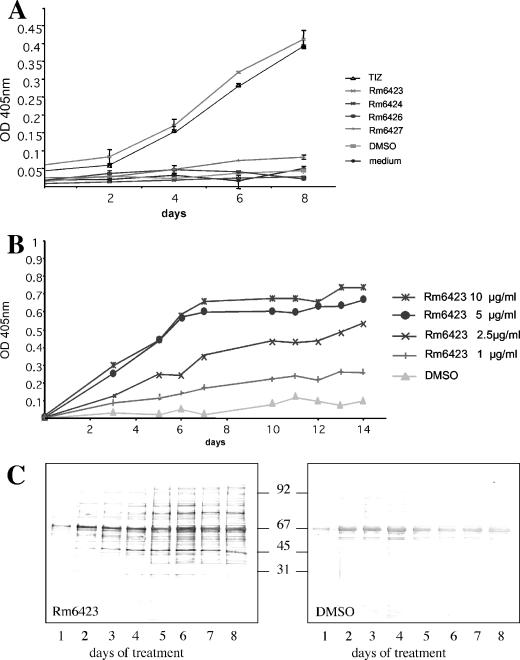FIG. 2.
Assays for the detection of drug-induced metacestode damage. OD, optical density. (A) Results of an EmAP assay demonstrating the increased release of alkaline phosphatase activity from E. multilocularis metacestodes during in vitro treatment with nitazoxanide (positive control) and synthetic isoflavonoids Rm6423, Rm6424, Rm6426, and Rm6427. Note the increased efficacy of Rm6423. (B) Dose-response EmAP assay with Rm6423, showing a clear relationship between drug concentration and presence of EmAP activity in medium supernatant of E. multilocularis metacestode cultures. (C) Measurement of release of hydatid fluid compounds from E. granulosus metacestodes following treatment with Rm6423 by immunoblotting of medium supernatants after SDS-PAGE at different time points and labeling with a polyclonal antiserum directed against E. granulosus vesicle fluid. Note the time-dependent increase of signal. For a negative control, vesicles were incubated with equivalent concentrations of DMSO. Numbers in the center indicate the positions of molecular weight markers.

